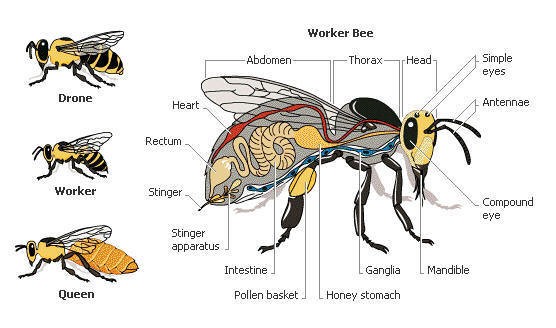Role of Worker Honeybees in the Beehive
Worker honeybees are vital to the survival and productivity of the colony. Their responsibilities include foraging, hive maintenance, nursing, honey production, temperature regulation, and defense.
- Foraging: Worker bees collect nectar, pollen, water, and propolis from the environment. They travel several miles in search of these essential resources, ensuring the colony has enough food and materials for hive upkeep.
- Hive Maintenance: As skilled builders, worker bees construct and maintain the hive using beeswax secreted from their bodies. They create honeycomb cells for storing honey, pollen, and developing brood. Additionally, they seal cracks and reinforce hive structures to maintain an optimal environment.
- Nursing: Worker bees care for the developing brood by feeding larvae a nutrient-rich mixture called “bee bread,” made from pollen and nectar. They also clean hive cells and remove waste, ensuring a hygienic environment for the colony.
- Honey Production: Worker bees play a crucial role in honey production. They ingest nectar, process it through regurgitation, and deposit it into honeycomb cells. By fanning their wings, they accelerate evaporation, transforming nectar into honey.
- Temperature Regulation: To maintain an ideal hive temperature, worker bees fan their wings to circulate air, preventing overheating and ensuring suitable conditions for brood development and honey storage.
- Hive Defense: Worker bees protect the colony from intruders using their stingers. They defend the hive against predators and other threats, sacrificing themselves if necessary to safeguard the colony.
Worker bees are the backbone of the hive, performing multiple tasks that ensure its survival and efficiency. Their collective efforts sustain the beehive, making them indispensable members of the colony.







Leave A Comment